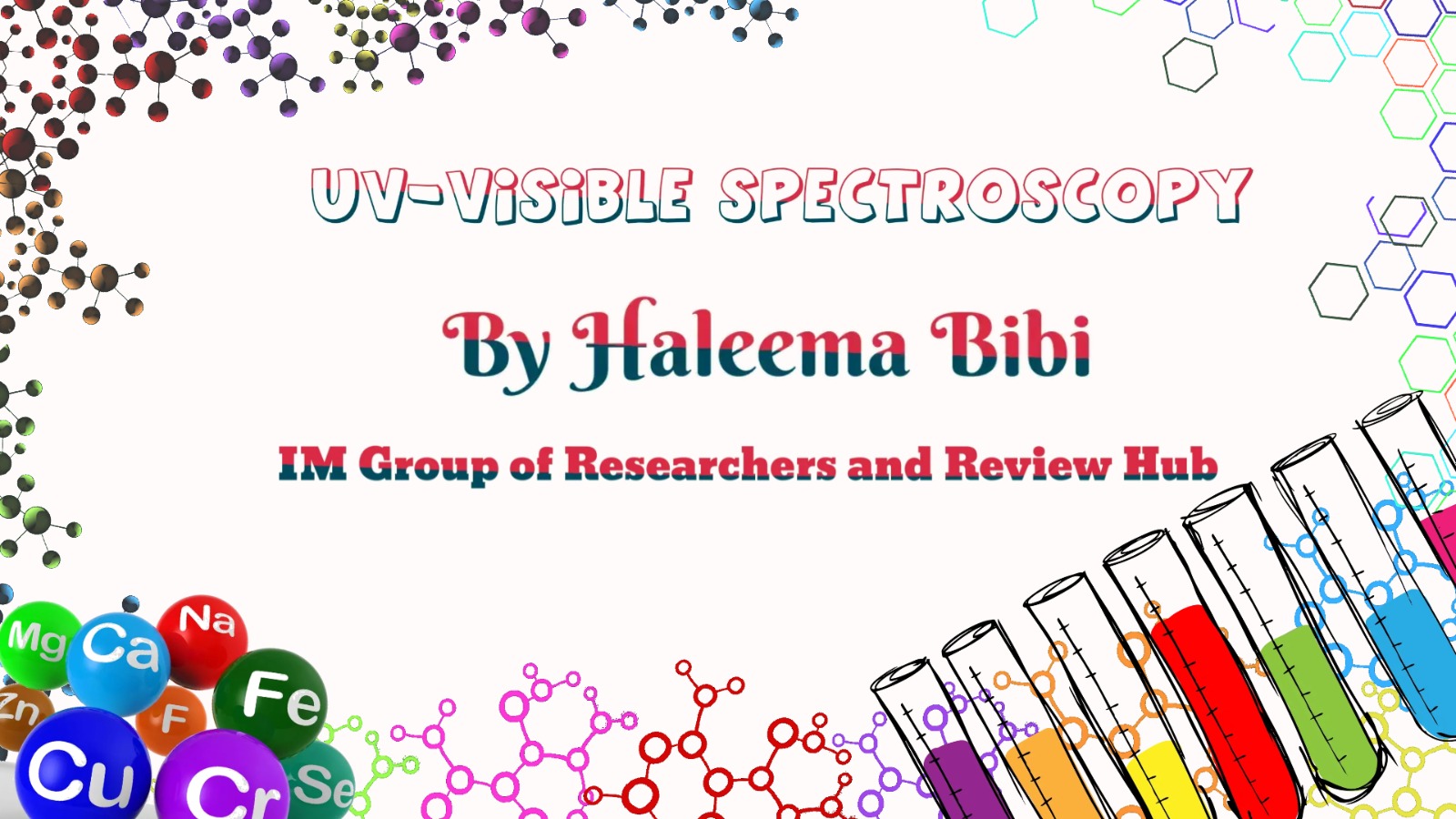Ultraviolet-Visible Spectroscopy
A general analytical technique is Ultraviolet-Visible Spectroscopy (also known as UV-Visible / UV-Vis spectroscopy), which measures how much radiations and visible light a chemical absorbs. The foundational ideas, real-world applications, precision factors, solution handling procedures, techniques used, and the unique function. UV-visible spectroscopy plays role in nanoparticle investigation. Additionally, we will explore the merits and limitations of this technique in analyzing a diverse array of materials.
Author: Haleema Bibi
Principles of UV-Visible Spectroscopy
Consider a discourse between electromagnetic radiation and molecular entities. UV-Visible spectroscopy manifests precisely this interaction. When molecules encounter ultraviolet or visible light, electronic transitions occur, and electrons shift to higher energy levels. This yields distinctive absorption patterns, forming the basis of UV-Visible spectroscopy.
Applications and Precision
1. Quantitative Precision:
UV-Visible spectroscopy serves as a quantitative virtue, employing the Beer-Lambert law to establish a quantitative relationship between absorbance and concentration in solutions.
2. Qualitative Clarification:
UV-Visible spectra serve as a qualitative clarifier in addition to being a quantitative evaluator. They reveal the electronic structures and provide a molecular basis of chemical bonds.
3. Temporal Perception:
In order to better understand reaction kinetics, UV-visible spectroscopy serves as a temporal lens that enables researchers to examine reaction processes and rate constants throughout time.
Why Is the Best Detection Method UV-Visible Spectroscopy?
Depict UV-Visible spectroscopy as a discerning investigator, possessing remarkable sensitivity to detect trace amounts of analytes. Its utility extends across diverse domains, encompassing environmental monitoring and the quality assurance of pharmaceutical samples.
Solution Handling in UV Spectroscopic Analysis
1. Solvent Selection:
Strategic selection of a solvent, transparent within the UV-Visible range, such as water, methanol, or ethanol, is paramount for optimal outcomes.
2. Cuvette Considerations:
Employing quartz cuvettes as the sample holder ensures transparency within the UV range, mitigating interference and preserving the integrity of the molecular shift.
Operational Dynamics of Ultraviolet-Visible Spectroscopy
1. Single-Beam vs. Double-Beam:
The choice between single-beam and double-beam UV-Visible spectrophotometers defines the operational arrangement. Single-beam scrutinizes sequentially, while double-beam concurrently compares sample and reference, enhancing precision.
2. Derivative Spectroscopy:
As a derivative spectroscopy enhances spectral resolution, highlighting peaks within the absorption spectrum.
UV-Visible Spectroscopy for the Investigation of Nanoparticles
Within the realm of nanoparticle analysis, UV-Visible spectroscopy assumes the role in analysis of nano range materials. The absorbance spectra of nanoparticles untie vital information relating to size, shape, and concentration, offering a comprehensive understanding of their unique characteristics.
Merits and Warnings
Advantages:
1. Versatile Collaboration:
UV-Visible spectroscopy seamlessly collaborates with diverse materials, spanning organic and inorganic domains.
2. Speedy Outcomes:
Demonstrating rapidity, UV-Visible spectroscopy yields expeditious results, rendering it suitable for routine analyses.
3. Discriminating Sensitivity:
Exemplifying unfair sensitivity, the technique discerns minute concentrations with perception.
Limitations:
1. Informational Constraints:
While proficient in explaining electronic structures, UV-Visible spectroscopy might not provide granular molecular details.
2. Interference Problems:
Occasional interference from impurities or overlapping spectra may challenge accuracy.
3. Conditional Applicability:
Some materials may exhibit limited absorbance in the UV-Visible range, limiting the technique’s universal applicability.
Conclusion:
In the symphony of scientific methodologies, UV-Visible spectroscopy emerges as a compassionate conductor, unraveling the mysteries of molecular arrangement. Its rapid, versatile, and sensitive nature establishes it as a foundation in analytical pursuits. As technology advances, UV-Visible spectroscopy will undoubtedly persist in illuminating the hidden, contributing to the expansive site of scientific knowledge.
Also read: Metal Organic Frameworks
Follow Us on

